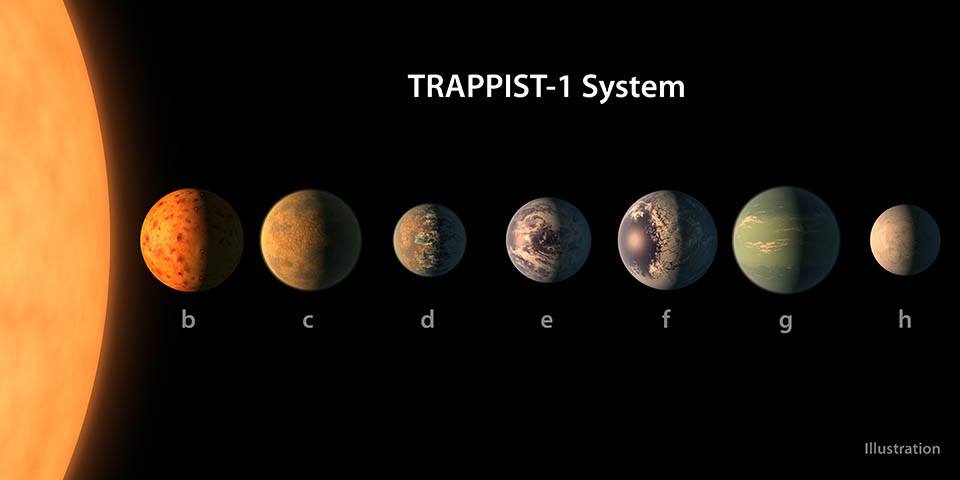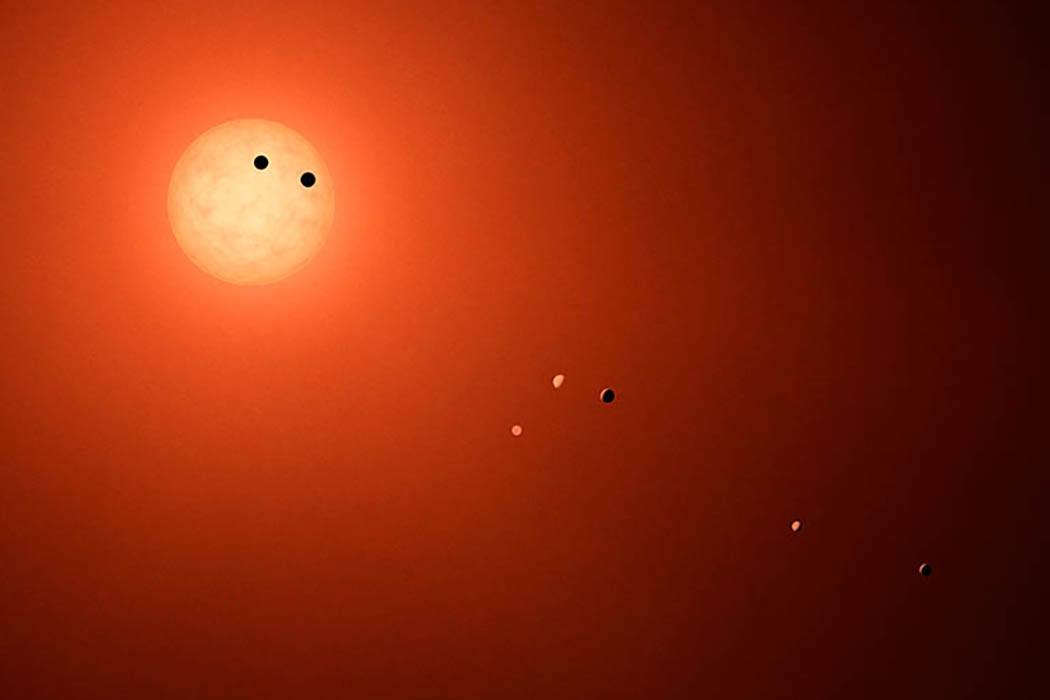A motherload of 7 Earth-sized exoplanets has been found in Trappist-1, a system in Aquarius named for the telescope that first spotted it. Three of the planets are in the so-called habitable zone, the appropriate distance from their star for liquid water to be able to exist. The star they orbit is a small, cool, star known as an ultra-cool dwarf. What do we know about systems like this?
For years, the search for planets outside the solar system focused on stars similar to our own. In recent years, buoyed by the Kepler telescope, astronomers have broadened their search to include previously ignored stars. One class of star that became a focus of exoplanet searches is the M-dwarf.
M-dwarf stars are, as the name implies, small, much smaller than our average-sized sun. They tend to be cool, less than 2700K. Ultra-cool dwarf stars are on the lower end of the M temperature range. M-dwarves became popular targets for planet searches since, as the most numerous stars in the galaxy, many are nearby.

The low temperatures on M-dwarves allow liquid water to exist on planets much closer to the star than Earth is to the sun. Astronomers mostly search for planets by seeking the gravitational influence the planet has on the star. A planet’s gravity creates a slight shift in the radiation emitted by the star. Planets closer to the star have a larger impact, making these shifts easier to detect. Even the faint wobbles caused by low-mass planets can be observed. Furthermore, the way dust and rock accrete around M-dwarves also encourages the formation of smaller, Earth-sized planets. The low intensity of these stars, however, makes them difficult to see.
So what would a habitable planet orbiting such a star look like? Astronomers believe that the Trappist-1 planets may be tidally locked, meaning that one side always faces the star (the other always faces away). The star’s proximity makes this condition more likely. The temperature difference between the two sides is obviously gigantic, so any habitable zone is probably concentrated around the planet’s equator. If a tidally locked planet circling a cooler star has an ocean, however, the ocean on the sun-facing side can transport heat to the equators or to the dark side (similar to how ocean currents transport heat from Earth’s equator to the poles). Given a sufficiently thick atmosphere, ocean heat transport could even extend the habitable temperature zone of the planet well into the dark side. On the other hand, ocean transport could also shrink the habitable zone by shifting needed warmth away from the sweet spot.
The good news is, at a mere 40 light years away, the planets are basically down the block. At that distance, Trappist-1 is accessible to a range of telescopes, and information about the planets’ composition, atmosphere, and any water will soon be known.







